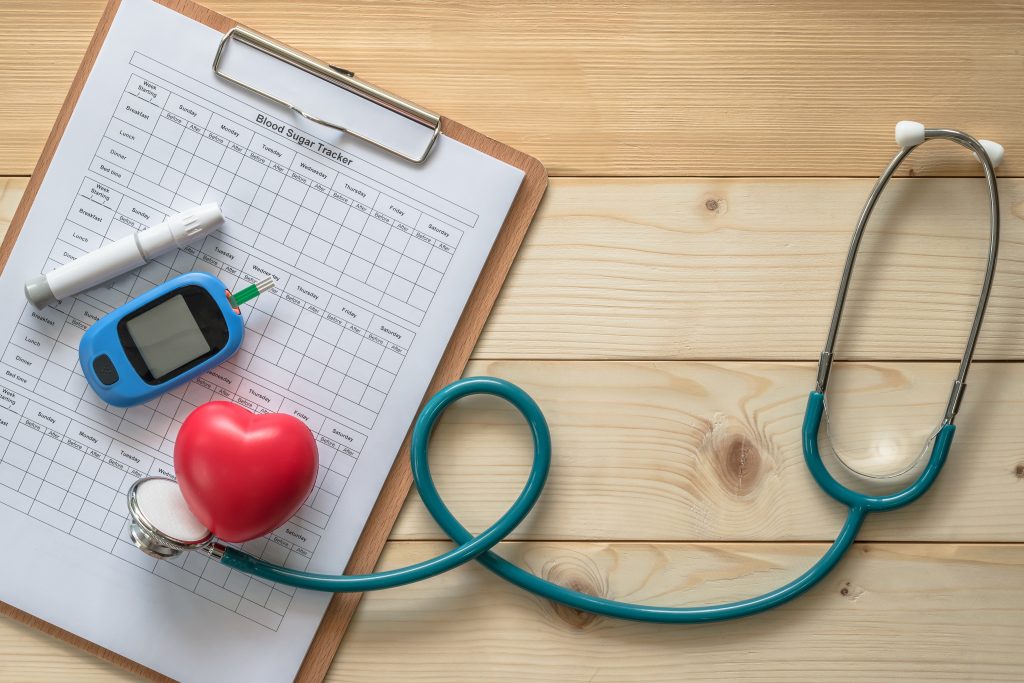
Injection Perfection: Insulin 101
Emma Keating
Pharmacy Intern
Insulin is the hormone that your pancreas makes in order to help your body use the glucose (sugar) you ingest for energy. Without insulin, your body’s blood sugar levels can get too high and can lead to long term complications over time. In diabetic patients, insulin injections may be prescribed by your doctor as a part of an individualized treatment plan. While it sounds simple enough there are a lot of things come with insulin injections, so welcome to Insulin 101!
Self-Monitoring 1,2
When taking insulin, it is very important to check your blood sugar regularly as directed by your doctor. While having high blood sugar the problem we are trying to treat, injecting too much insulin can make your blood sugar too low. Low blood sugar, or hypoglycemia, can actually cause its own set of issues indicated by shaking, anxiety/confusion, sweating and chills, along with feeling dizzy. Usually, you will check your blood sugar before your first meal of the day. This is called a “fasting blood sugar” and the average goal is <100 mg/dL but can vary. Your blood sugar goal and the number of times you need to check it may change, so it’s very important to talk to your healthcare provider regularly!
Types of Insulin 3
There are several types of insulin based on how long it will work in your body or how quick it starts to work in your body. When you are first starting, it may take some time along with trial and error to find the dose that works for you.
- Ultra-Rapid Acting – begins to work within 12-20 minutes and lasts 1-3 hours4
- Insulin lispro-aabc (Lyumjev)
- Rapid Acting – begins to work 15-30 minutes after injection and lasts 2-4 hours
- Insulin lispro (Admelog, Humalog)
- Insulin aspart (Fiasp, Novolog)
- Insulin glulisine (Apidra)
- Short Acting – begins to work 30 minutes after injection and lasts 3-6 hours
- Regular insulin (Humulin R, Novolin R)
- Intermediate Acting – begins to work 2-4 hours after injection and lasts 12-18 hours
- Insulin NPH (Humulin N)
- Long Acting – takes several hours to start working, but lasts about 24 hours
- Insulin glargine (Basaglar, Lantus, Semglee)
- Insulin detemir (Levemir)
- Insulin degludec (Tresiba)
- Very Long Acting – starts working in 6 hours, lasts about 36 hours
- Insulin glargine, 300u/mL (Toujeo)
Injection Technique 1,2
Needle and Syringe – Using a needle and syringe means that you will have to draw up insulin from the vial. It is important to know your dose and how much you need prior to drawing up the medication. Afterwards, the insulin is injected under the skin (subcutaneously).
- Wash your hands prior to injecting medication.
- Choose the site to inject: back of the arms, the belly (except for 2 inches around the navel), front and outer side of the thighs, upper hip and upper outer area of the buttocks. Clean the area with an alcohol wipe.
- Pinch up a fold of the skin and quickly inject at a 90 degree angle (unless otherwise directed). Continue to pinch the skin and push the plunger down to inject the insulin. Do not inject medication through clothing.
- Hold in place for 5-10 seconds.
- Release the skin fold and remove the needle from the skin. If you can see insulin (clear fluid) or blood leaking from the injection site then press on the area for several seconds.
Pen Injectors – generally, insulin pens are easier to use as well as easier to bring places if you are on the go! The pen has a container that stores the insulin within it and a dial to preset the exact amount of insulin that you need. You will have to attach a new needle each time and it is very important to never share a pen or needle. The injection is given subcutaneously, using a similar technique to a regular syringe and needle. Instead of pushing down the plunger of the syringe, all you will have to do is push the button on the pen injector. Instructions for use can vary depending on the type of pen, so it is important to talk to your doctor, nurse or pharmacist about proper technique!
Storage 3
Keep your insulin in the fridge until you open it. Unopened vials and pens are good until the expiration date on the device. Once you open a vial or use a pen, keep them at room temperature in a safe, dry place. Avoid extreme temperatures – never store your insulin in the freezer, direct sunlight or in the car. Opened vials expire 1 month after they are opened. Usually pens expire 1 month after they are used, but this date can vary based on the type of device you have so be sure to read the label!
Tips & Tricks 1,2,3
Keep a notebook with all of your medicines and doses, including over the counter items, vitamins and supplements. Also keep track of your blood sugar readings and the amount of insulin you are injecting each day.
Having all of your medications sent to one pharmacy helps cut down on the risk for drug interactions or duplicate medications. This makes it easier for your pharmacist to ensure your medication safety!
It is very important to follow your insulin regimen as directed by your doctor and to not miss any insulin doses. Follow up with your healthcare provider if you have any questions or concerns regarding your treatment plan. Remember, be disciplined with your insulin!
SOURCES
- Weinstock RS, Nathan DM, Mulder JE. Patient Education: Type 1 Diabetes: Insulin Treatment Beyond the Basics [Internet]. 2020 [cited 2020 Aug 27]. Available from: https://www.uptodate.com/contents/type-1-diabetes-insulin-treatment-beyond-the-basics/print
- Wexler DJ, Nathan DM, Mulder JE. Patient Education: Type 2 Diabetes: Insulin Treatment Beyond the Basics [Internet]. 2020 [cited 2020 Aug 27]. Available from: https://www.uptodate.com/contents/type-2-diabetes-insulin-treatment-beyond-the-basics
- Medication Management: Insulin Basics [Internet]. 2020 [cited 2020 Aug 27]. Available from: https://www.diabetes.org/diabetes/medication-management/insulin-other-injectables/insulin-basics
- Introducing Lyumjev [Internet]. 2020 [cited 2020 Sept 1]. Available from: https://www.lyumjev.com/hcp/formulation

